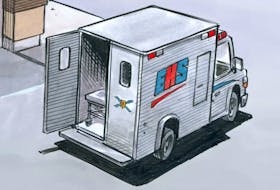The momentum is decidedly pro-mask at the moment, so it seems a pretty safe bet that a face covering of some sort will become part of most wardrobes in the days, weeks or months to come, if it hasn't already.
That's partly because the thinking about masks by Canada's public health brain trust has either evolved significantly or changed fundamentally, depending on how charitably you decide to view their 180-degree course correction.
When the coronavirus descended on Canada, you may recall, federal and most provincial public heath officials were, at best, skeptical about the efficacy of people wearing non-medical face masks as protection against the spread of COVID-19. Many were outwardly dismissive of the concept.
But much has changed in our — and more importantly, in their — understanding of the virus over the past four or five months. Not least among those changes was the realization that the virus is spread by people who have no idea they are infected.
Public health officials are still saying that wearing a homemade, cloth, non-medical mask likely doesn't provide all that much protection for the wearer.
That seems somewhat counterintuitive since the virus is carried in little droplets escaping the mouth or nose of a person who is infected. Wearing a mask would seem a natural defence against taking aboard any of those nasty little droplets.
But it's the droplets travelling in the opposite direction that the masks are meant to stop, and public health officials now agree that masks are effective at blocking the spread of the virus from a carrier — asymptomatic or otherwise — to an unsuspecting potential host.
Or, as the Public Health Agency of Canada now says, “when physical distancing cannot be maintained, consider wearing a non-medical mask or homemade face covering,” not to protect yourself but to protect others from your unwittingly infected self.
Masks, we are sternly warned, are no substitute for maintaining a two-metre physical distance from others, which, along with near-obsessive hand-washing, not touching your face and staying home when you're sick, are the COVID-control commandments.
As more spaces and places are opened and reopened, masks are likely to become part of the dress code in many. Smaller shops and stores where physical distancing is difficult will almost certainly adopt masks as an added line of defence for their staff and to provide customers with an added sense of security, even if it's false.
“Wearing a homemade nonmedical mask/facial covering in the community is recommended for periods of time when it is not possible to consistently maintain a two-metre physical distance from others, particularly in crowded public settings, such as stores, shopping areas, and public transportation,” is the official word on the federal public health website.
The national public health agency also provides helpful hints on what not to do with your non-medical masks.
For example, sharing your mask with others kind of defeats the purpose, so don't do that. Care should also be taken to ensure the mask doesn't cover your eyes or otherwise impair your vision, particularly when driving or operating heavy machinery.
Slapping a mask on a baby is something that the PHAC believes Canadians need to be told not to do. Likewise, affixing a mask to someone who can't get the thing off themselves is frowned upon.
Granted, some of these warnings may seem self-evident but in a pandemic common sense is inversely proportional to the perceived risk of infection, so PHAC takes no chances.
Masks made of plastic or other materials that stop the flow of air should be avoided for fairly obvious reasons, according to the ever vigilant PHAC, which also believes Canadians need to be told not to tape the mask to their faces.
On the plus side, your mask should allow for easy breathing; fit securely to your head with ties or ear loops; maintain its shape after washing and drying; be comfortable; be made of at least two layers of tightly woven material fabric (such as cotton or linen); and be large enough to completely and comfortably cover your nose and mouth without any gaps.
Being surrounded by people wearing masks is a little disconcerting — maybe even a tad creepy — to some of us.
But if it stops the spread of the virus, it's worth a try, and it doesn't mean we have to like it.









